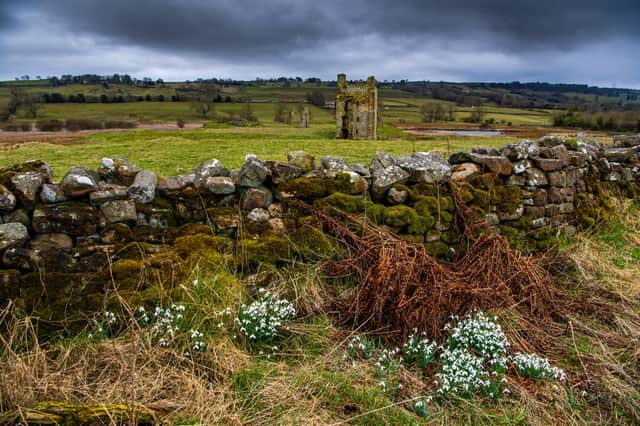Picture Post: Listed remains of a Yorkshire castle once visited by King John


The square gatehouse is all that remains of the fortification on the edge of the rural village of Ravensworth, near Richmond.
The castle was recorded in the Domesday Book and in 1201 records show that it was visited by King John.
Advertisement
Hide AdAdvertisement
Hide AdAccording to the website CastlesFortsBattles.co.uk, “Given the turbulent relationship with Scotland, especially after the start of the Wars of Scottish Independence in 1296, it would seem unlikely if there wasn’t some form of fortification on the site. By this time Ravensworth was in the hands of the FitzHugh family, descendants of Bodin, and in 1321 Henry FitzHugh was created a Baron by Edward II.”
However, the remains seen today date from the late 14th Century after being built for Henry, the third Baron FitzHugh.
CastlesFortsBattles.co.uk explains: “In 1391, presumably concurrently with the building work on the castle, Richard II granted Henry a licence to enclose a 200 acre park around his Ravensworth estate.
“Henry remained closely associated with the Crown even after the regime change in 1399 and served under Henry V in his continental campaigns.”
Advertisement
Hide AdAdvertisement
Hide AdOver the generations, the castle gradually fell into ruin and in 1571 with no heir to take it on, the site was passed to the Crown. However, masonry from the neglected site started to be taken from the site to be used in other local buildings and by the early 17th Century little was left beyond what is visible today.
In 1969, Ravensworth Castle was given Grade I listed status by Historic England in recognition of it being an ancient monument.
A surviving park wall was also given listed status. Historic England state: “The Park Wall, constructed around the medieval hunting park by licence in 1391, survives almost intact, partly rebuilt but in many stretches clearly surviving in medieval form, of tapering section, constructed of large roughly-squared stones, standing approximately 2 metres high.”
Technical details: Nikon D5 camera with a Nikon 24-70mm lens, exposure of 1/320th second at f8, ISO 200.
Advertisement
Hide AdAdvertisement
Hide AdSupport The Yorkshire Post and become a subscriber today. Your subscription will help us to continue to bring quality news to the people of Yorkshire. In return, you’ll see fewer ads on site, get free access to our app and receive exclusive members-only offers. Click here to subscribe.
Comment Guidelines
National World encourages reader discussion on our stories. User feedback, insights and back-and-forth exchanges add a rich layer of context to reporting. Please review our Community Guidelines before commenting.